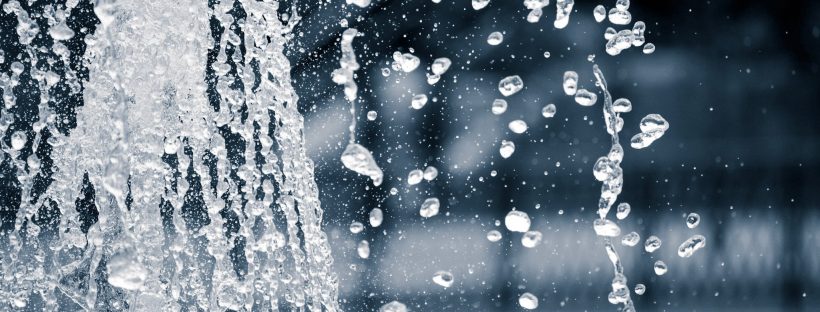Everyone knows that water is essential to life. We can go without food for weeks (hell, I probably should) but a few days without water and we’re, well, toast. Water is life. The oldest sites we know of where unrelated people began to live together, establishing the first towns over 10,000 years ago in the Cradle of Civilization, were located along the banks of the Tigris and Euphrates rivers. Our bodies reflect this dependency – we are all of us about 60% water, which makes sense on a planet whose surface is mostly covered by it. So it rings true on a deep, almost visceral level that its also essential for our well-being, not just our survival.

Photo by Hilary Halliwell from Pexels
I’m not talking about the obvious pleasure most of us seem to feel in the presence of water. The popularity of resorts by the seashore or the lakeside, the attraction of water parks, the allure of water features seem to be nearly universal. We are drawn to water. It clearly makes us ‘feel good’, but is it just some kind of instinctive attraction to a necessary resource?
Apparently not. Research into the physical and chemical attributes of moving water has shown some interesting results. That should come as no surprise. It exhibits a number of properties that are quite literally unique. For example, we take for granted that ice floats – but it shouldn’t. The fact that the colder, solid state of water – ice – is less dense than the warmer liquid state, directly contradicts the physical laws that govern just about every other compound and element on this planet, and every other. As temperatures increase, matter expands. As volume goes up, density, by definition, decreases. Hot air rises. Cold water sinks – to a point. As temperatures drop, density increases – except in the case of water. It is densest at 38 degrees, not 32 degrees. At the lower temperature, ice becomes significantly less dense, unlike any other commonly found substance.
The cohesion of H2O is equally fascinating. The molecules exhibit strong attachment to itself, so strong that molecules leaving the needles of a redwood through evaporation literally pull up on an unbroken chain of water, hauling a continuous stream up through capillaries from the very roots of the tree, 400 feet below, easily defeating the force of gravity. This cohesion creates the surface tension that mosquitoes hang from and lizards run across, the pseudo-membrane that pulls leaves into skimmers from across a pond.
It’s small wonder then, that the miraculous substance we take for granted actually contributes to our physical and mental health. Falling water splits electrons off neutral molecules, generating a charge in much the same way that rubbing your hand across a silk scarf generates a spark. The action of a waterfall, or the waves on a beach, or a thunderstorm, creates and spreads these charged particles, negative oxygen ions, into the surrounding air. The strongly charged ions are attracted to oppositely charged dust, pollen, mold spores, smoke and other allergens, even odors, bonding to them and dropping them out of the air – and away from our lungs. When we stand near a waterfall, natural or man-made, we perceive a freshness, almost a tingle to every breath, as we breath the purified air.
Negative oxygen ions also annihilate free radicals that attack our cells. As they enter the bloodstream, they increase serotonin production, elevating our mood and increasing alertness and energy levels. (That morning shower really does wake you and prepare you for the day.) Ions have even been shown to destroy viruses and bacteria.
So this World Water Day, let’s celebrate water in all its forms, and give thanks for the health and well-being that living water promotes, rejoicing in the knowledge that our water features really do make our lives better.
For more great blogs from Demi check them out here!
About the Author:

DEMI FORTUNA
Demi has been in water garden construction since 1986. As Atlantic’s Director of Product Information, if he’s not building water features, he’s writing or talking about them. If you have a design or construction question, he’s the one to ask.


